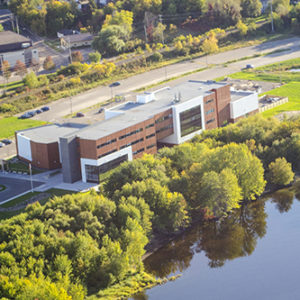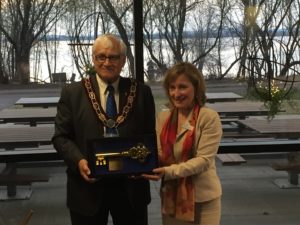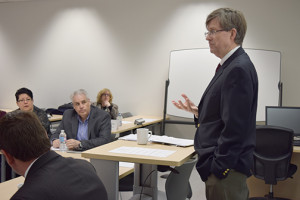MacLean’s magazine recently released its annual report on the best communities in Canada to live in. 415 municipalities made the list, including three from Renfrew County. Petawawa placed number 120, Laurentian Valley came in at 279 and Pembroke landed at 318 on the list.
Considering there are more than 3,500 municipalities in Canada, these three local communities should be very proud of their standing in this national survey. MacLean’s uses a number of factors as part of its methodology to determine where communities land on the list. One of them is access to post-secondary education.
Given that Algonquin College’s Pembroke Campus has been serving the Upper Ottawa Valley since the Ontario college system was founded in 1967, the results of the survey had me thinking about the impact the college had on the scoring.

To better address that question you need to look at how communities receive points in the review. MacLean’s compares communities by awarding 20 points for wealth and the overall health of a city or town’s economy. This category takes into consideration fluctuations in the employment rate, median household income and average household net worth.
Another 20 points is awarded for the affordability of living in the community. That section looks at house prices, rental costs, the value of primary real estate and the ratio of discretionary income compared to the average household income.
Eleven points focus on access to health care, the weather patterns in a region account for ten points and another ten points are awarded for the commute to work. Seven points are awarded for the safety of the community, primarily looking at crime rates and six points are given for the municipality’s demographics, the mix of age groups that support a vibrant community.
The final points come from culture and amenities. This is where having a nearby post-secondary school comes into play. While the value for culture is five points, the amenities section where colleges are found is only awarded 2.5 points.

In Pembroke’s case, I would argue that Algonquin College influences several of the factors in the survey including the overall health and wellness of the region, the housing and labour markets, and the region’s ability to retain youth in the community. For more than five decades the campus has been providing access to post-secondary education for hundreds of people who may not have pursued higher education had a college not been close by to their residence.
The college provides significant employment opportunities through its hiring of administrators, faculty and support staff and the graduates it produces support the local labour market. Think of the nurses who work in our local health care system, the forestry graduates who support one of the largest industries in the Ottawa Valley and the Early Childhood Educators who are vital to our elementary school system.
 Finally, think about the pride and prestige that a college brings to our region. Having a post-secondary credential is essential in today’s competitive job market and any student who studies in an apprenticeship, college or university program is proud of their accomplishments. From a community branding and marketing perspective, having a college in a smaller centre is a competitive advantage when attracting new business or new residents.
Finally, think about the pride and prestige that a college brings to our region. Having a post-secondary credential is essential in today’s competitive job market and any student who studies in an apprenticeship, college or university program is proud of their accomplishments. From a community branding and marketing perspective, having a college in a smaller centre is a competitive advantage when attracting new business or new residents.
By placing on the top 415 communities in Canada to live in, MacLean’s magazine has acknowledged that the Pembroke area is one of the greatest places in our country to live in. Algonquin College is a big part of the reason why this is so. The College has proven it’s a major influence on the region’s economic prosperity.
Posted by: Jamie Bramburger is the Acting Chair of Health and Community Studies at Algonquin College’s Pembroke Waterfront Campus.

